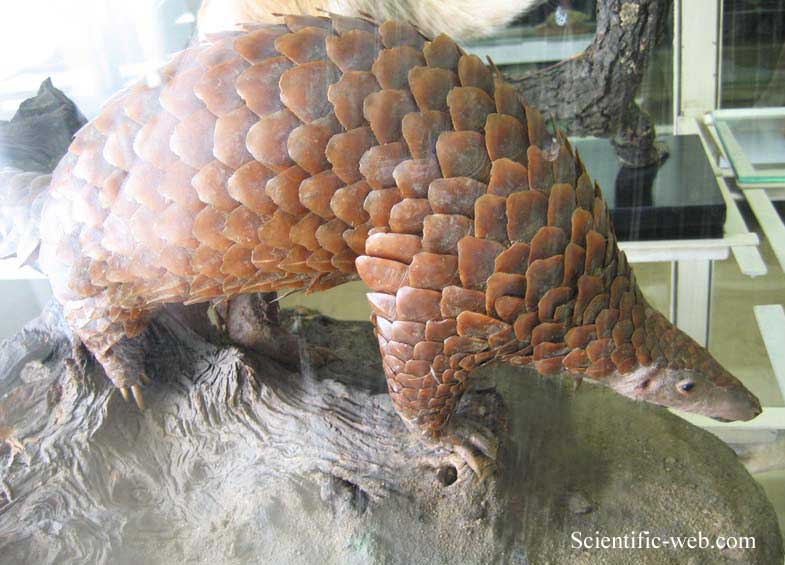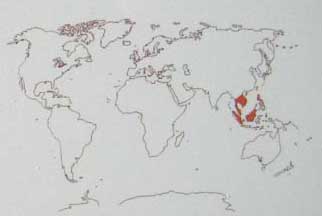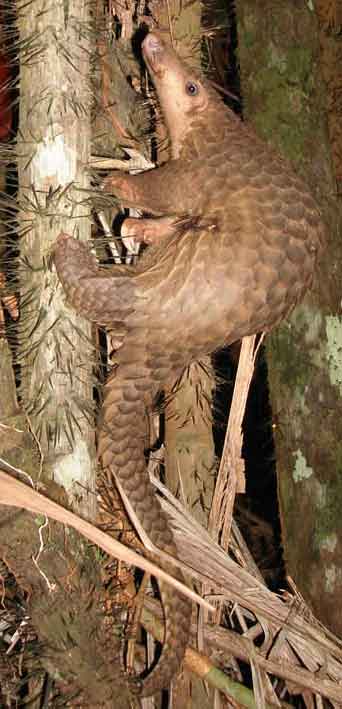Manis javanica , Photo: Michael Lahanas Cladus: Eukaryota Name Manis javanica Desmarest, 1822 Vernacular names ---------- Sunda Pangolin known as Javan Pangolin and Scaly Anteater. The Sunda Pangolin (Manis javanica), also known as the Malayan Pangolin, is a species of pangolin found in South-East Asia, including Thailand, Indonesia (Java, Sumatra, Borneo and the Lesser Sunda Islands), the Philippines, Vietnam, Laos and Cambodia, and Malaysia and Singapore. These pangolins are found in Southeast Asia’s forested habitats (primarily, secondary, scrub forest) and plantations (rubber, palm oil). Mostly, they spend time within tree resting or searching food [3] . The skin of its feet is granular although there are pads on its front feet. Its tail has 30 scales. The Sunda Pangolin's main predators are the Tiger and the Clouded Leopard. It has thick and powerful claws to dig into the soils in search of ant nests or to tear into termite mounds. The nose is fleshy and no teeth in the mouth. However, it has a long and sticky tongue. This helps them to collect ants and termites. Its body covered by rows of scales and fibrous hair. Head-body length of pangolin is up to 65cm, tail length is up to 56cm and its weight is up to 10kg. In fact, males are larger than females. Pangolins give birth annually to one or two offsprings. It breeds in the autumn and gives birth in the winter burrow. Parental care will be given for approximately three months. Pangolin sometimes found in pairs, but normally solitary, noctural and behaves timid. It protects its soft underparts by rolling into a ball when they feeling threatened. They are strong diggers and will make burrows lined with vegetation for insulation near termite mounds and ant nests.[3] Advantages of these animals are constructing burrow to get ants and termites for food resources. Besides that, it also helps in soil aeration.[3] Human beings hunt the pangolin for their skins, scales and meat. Their parts are used for medicinal purposes.[3] Scales of pangolin are made into a ring as a charm against rheumatic fever and meat is eaten by indigenous peoples. Besides that, skins are also used to make shoes. One of the main importers of pangolin skins from 1980-1985 was the United States of America.[3] Nepalese believe that an extract of the uterus or “garvaeulo” of the pangolins safeguard against abortion. Pangolins are dislodged from their burrows by digging or sending the pungent odor of chili into the hole of the burrow. Taxonomy In the past this species has included the closely related Palawan Pangolin (Manis culionensis) as both are in the subgenus Paramanis.[4] It is closely related to the Chinese Pangolin, although the Malayan species is larger, lighter in colour and has shorter foreclaws. References
Source: Wikispecies, Wikipedia: All text is available under the terms of the GNU Free Documentation License |
|




